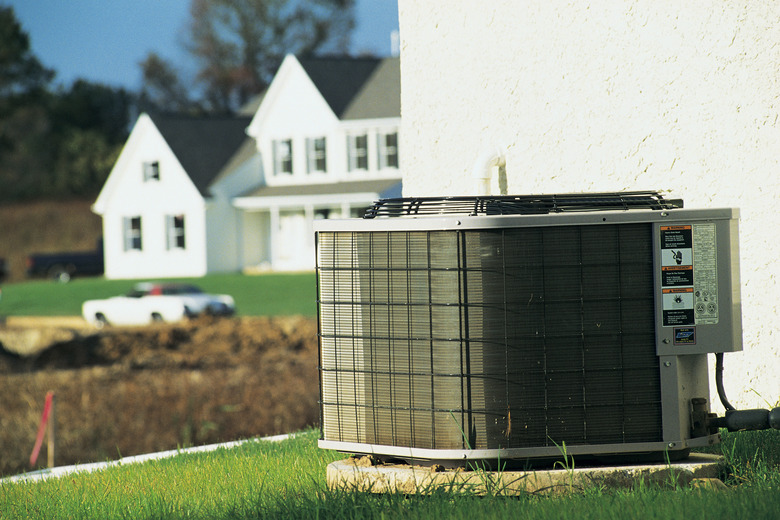The Best SEER Air Conditioner For A 1,600-Square-Foot House
We may receive a commission on purchases made from links.
When putting in a central air conditioning unit, you need to make two primary considerations in determining what type of air conditioning unit you get. The first of these is the size of the unit, which is generally expressed in terms of HVAC tonnage, based on your home size. Units can be 1-ton units, 1.5-ton units and so on, and the bigger the house, the larger the unit required. The second consideration is the Seasonal Energy Efficiency Ratio, or SEER rating, that tells the actual energy efficiency of the unit and is based mostly on your personal preference.
Tip
The SEER rating describes the energy efficiency of your HVAC unit, so there's not a specific recommended SEER rating based on home size. The higher the number, the more efficient the unit, but you don't need to choose the unit with the highest SEER rating to have energy-efficient cooling.
Home Size Considerations
Home Size Considerations
Your home's size will provide you with the first indication of what size unit you will need. This should be your first consideration when choosing an air conditioning unit because you will need an air conditioner that has the output capacity to cool the home it is intended for. A 1,600-square-foot home will generally require a 3-ton air conditioning unit, but your HVAC professional will do a detailed calculation based on several factors, including the size, insulation, climate, number of windows and other architectural details.
Air Conditioner SEER Ratings
Air Conditioner SEER Ratings
The SEER rating of an air conditioner for a 1,600-square-foot home can vary. There is no specific requirement for a specific SEER rating for a home of this size, or for any other size for that matter. In 2006, the U.S. Department of Energy mandated that all newly installed central air conditioning units have a minimum SEER rating of 13. Unless you are installing a used unit on your own, your air conditioner will need to be at least a 13-SEER unit.
Ratings can go as high as a 27-SEER unit. The higher the SEER number, the higher the energy efficiency, which reduces the cost of running your air conditioning. You must decide which SEER rating works best for your 1,600-square-foot home. Your HVAC technician can make recommendations based on your preferences and your budget.
SEER Rating Calculations
SEER Rating Calculations
An air conditioner's SEER rating is calculated by dividing its BTUs or British Thermal Units by the number of watt-hours of energy use. This provides you with the ratio of the heat removal ability of the unit to the amount of energy it takes to remove the heat.
To calculate your potential energy savings with each SEER rating, determine your local electricity rate in kilowatts per hour and multiply that rate times the number of expected kilowatts to be used by each SEER system. This will provide you with an idea of the savings as you move from one SEER rating to the next.
Considerations for SEER Ratings
Considerations for SEER Ratings
When choosing your SEER rating, you don't necessarily have to go with the highest rating possible. However, over the long haul, doing so will save you more money than if you go with a lower SEER rating. For example, you can generally save about twice as much with a 27-SEER rating over a 13-SEER unit. If that difference calculates to $300 per year, then over a 10-year span you will save $3,000. Also, as the cost of electricity rises, the overall savings will increase as well.
